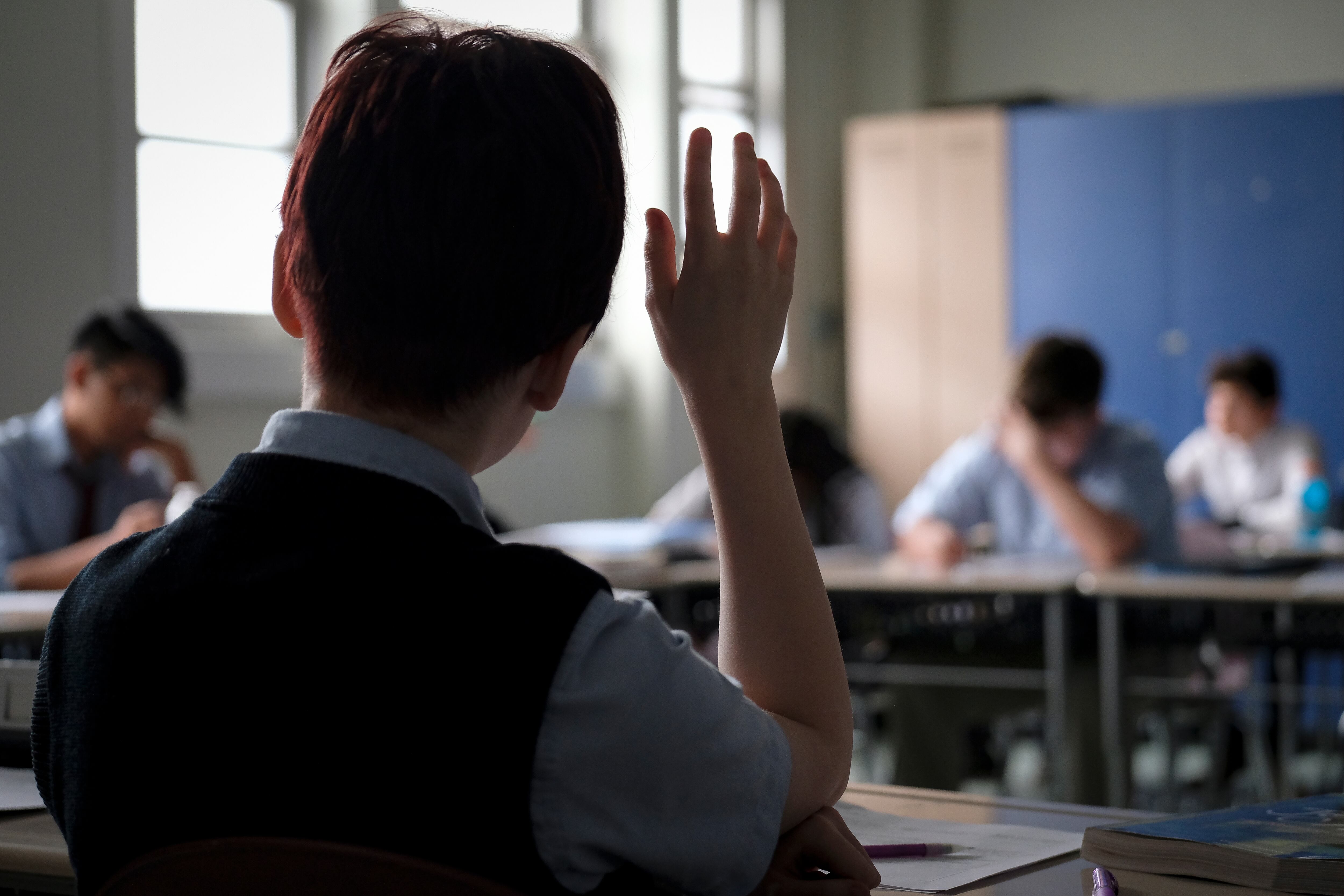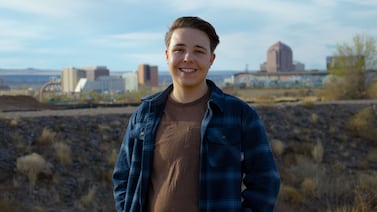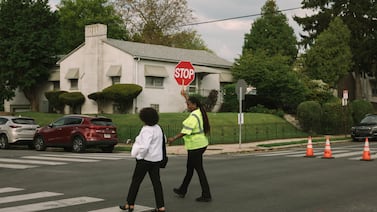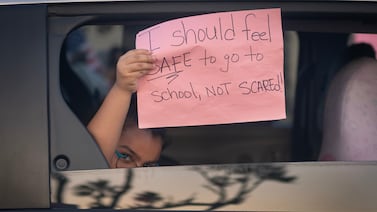Under pressure to make a decision soon about whether to reopen Chicago school buildings in the second quarter, Mayor Lori Lightfoot has said that the city is looking closely at the experience of Catholic schools.
The Archdiocese of Chicago reopened its schools for full-time in-person instruction in August, giving families the option to choose remote learning. Officials there say they are following strict safety measures and deem their reopening a success so far.
But the archdiocese has not released publicly the number of COVID-19 cases in its schools, the number of times they have quarantined students and employees, or even what percentage of students’ families opted for remote learning. That makes it difficult to fully size up the school year. Chalkbeat Chicago spoke with Justin Lombardo, the Archdiocese’s chief human resources officer and the point person on reopening schools, about the experience of Catholic campuses so far and the insights it might hold for other school systems.
The interview has been edited for length and clarity.
Chalkbeat Chicago: How did the archdiocese make the decision to reopen schools for in-person learning this past summer, even as most public schools in the area opted for virtual instruction?
Justin Lombardo: We started planning months before the school decision needed to be made. We knew we needed to factor in views from different constituencies and public health guidelines as well as our mission and our commitment to our students and their families across the archdiocese.
We invited two board-certified physicians in infectious diseases, who are faculty members at the Feinberg School of Medicine at Northwestern and practicing physicians as well as parents of school-age kids, to become our advisors. One of the key influences for us was statements put out by the American Academy of Pediatrics (that said the overriding goal should be to reopen classrooms where possible).
We also surveyed our parents. Over 85% of our parents told us they wanted us to do everything we could to bring the kids back to the classroom. That’s a powerful sentiment because these parents are part of our worship community.
We submitted our plans to our consulting physicians and to the departments of health, and there was a recognition that we were different than, for example, the Chicago Public Schools.
CB: What are some ways in which your situation was different from that of Chicago Public Schools?
JL: First and foremost, it’s size and flexibility. Their size is obviously much larger than ours. Our schools very often are smaller, and that allows us to look at being more flexible. Also, our schools are part of a larger physical plant that our parishes run. So that gives us the flexibility to look at additional spaces to use — perhaps different outdoor spaces, even indoor spaces, in church halls or in church basements.
CB: Did all schools that are part of the archdiocese reopen for full-time in-person instruction?
JL: We offered every school and the parents in every school the chance of coming back for in-person learning, or we had available options for distance learning for the children. We understood that in some cases, it was difficult for the parents to want to bring their children back because they might be in more vulnerable populations. I would say at probably 95% of schools, most kids are in person.
CB: Are you able to tell me what percentage of your students are learning remotely?
JL: I don’t have that number because it varies from some schools where there are very, very few to some schools where the numbers are much larger.
CB: Is there anything that stands out about the schools where a majority of families chose virtual instruction? Is there something about their locations and demographics that might explain why they’re outliers?
JL: No, not really. At least nothing that we’ve analyzed yet that I’m aware of.
CB: How did the archdiocese go about preparing for the reopening? What safety measures were put in place ahead of the return of students to school buildings?
JL: We put together a plan that set out guidelines on everything from taking temperatures when students come in the morning, to the setup of classrooms to socially distance students, to how recess should be handled, to what to do if a child shows up in the morning and seems unwell. Every school then had to create a plan that covered all of the aspects for a safe reopening. We then certified the schools that were ready to open. A critical part of our plan is the notion of the cohort, which you see in a lot of the literature about reopening schools. The same children stay together every day for their classes. They don’t split off and go to different rooms. These children are together for the whole day.
CB: What is the size of those cohorts at your schools?
JL: Cohorts go anywhere from usually 15 to maybe 23.
CB: The Chicago Teachers Union has said it wants to see a strict protocol for contact tracing if schools should reopen to students. The archdiocese did institute a contact tracing protocol. How does it work?
JL: We have a team made up of people that have experience in doing interviewing and investigative work, as well as two nurses. We also trace within our parishes because we believe it’s part of our responsibility as a large organization. It begins with a report coming in to our central team, which reacts by immediately contacting the principal to get more details. Is it a positive case? Is it an exposure to a positive case? Or is it a presumptive positive (a case when a patient tests positive by a public health laboratory, but results have not been confirmed by the CDC)? Each of those we triage, and we take care of the positive cases first. We immediately gather data about the individual, and we quarantine the cohort. We have a standard procedure for notifying the families of students that are in a quarantined cohort, about what to do and where to go. We, of course, maintain privacy, and we never identify the individual.
I would say the overwhelming numbers of positive cases we get in our schools come from familial contacts of transmissions or transmissions in group settings outside of the school. We have many cases where the family or the parents or older siblings went to a party where social distancing was not observed, where masking was not done. We’ve had situations where there are sport leagues for students that are not run by the archdiocese or by our schools, where the precautions may not have been taken as completely as they should have been.
And so we’re really comprehensive. And that’s led to really very, very good outcomes for us. So in all cases in Chicago, where we’ve had a case reported in one of our cohorts, there’s only been one situation where a second case was reported within the 14 days of the infection time. Now, we have 40,000-some students and 5,000 staff in our schools, and in the city of Chicago alone, we have 91 schools with a population of 19,000 students, plus another 2,700 staff. That’s pretty good.
CB: Are you able to share how many cases you have had across your schools, and how many times your students have had to quarantine as a result?
JL: I don’t have the exact number, but I can tell you that our positivity rate, which is a key rate, is less than 1%. That is a very, very fine showing.
CB: But again, you’re not able to share what your number of cases has been or the number of quarantines that you had?
JL:No, not at this point.
CB: You mentioned doing a parent survey. How much input did you solicit from your teachers to make the decision, and what was the response?
JL: We had input from different teachers representing different teacher populations, different schools. Overwhelmingly, our teachers returned to the classroom. And many, many, many were excited to do that. Now, it would be disingenuous to say that there was not some concern, some hesitancy on the part of some. (Note: Some Catholic school teachers have expressed concern and demanded remote learning.)
But by and large, after the first couple of days, they breathed a sigh of relief, and were glad to be back in the classroom with the students. So the vast majority of our teachers showed up, took the job very responsibly, and have been heroes to us in their diligence and their dedication.
CB: Did you see a higher-than-usual number of teacher retirements or other departures?
JL: Not anything that seemed to rise to the level of a significant spike. We did have a few teachers that said for whatever personal reasons that they did not want to do in-person learning. We attempted, if at all possible, to see if there was a way to employ them for distance learning for those schools that had large enough e-learning numbers to warrant additional teachers. But in some of the cases, we were not able to accommodate their requests to teach remotely.
CB: Have you heard ongoing concerns or anxiety from your teachers more recently as the school year has progressed?
JL: No, I think we have not. In all candor, if a school for the first time has to quarantine a child or a staff member or a cohort, immediately that does create for everybody an initial sort of, “Oh, here we go,” kind of thing. But usually, that’s quelled, because everybody’s working so consistently to make sure that people are notified and that we continue to be safe and clean.
In a pandemic, there is no place where you are 100% safe. Everybody in our daily lives now unfortunately is accepting a level of risk.If we’re safe, if we follow the guidelines, if we wash our hands, wear our masks, maintain social distance, then we’ve mitigated the risk as best we can.
CB: Officials in Chicago Public Schools have said school ventilation systems and classroom air quality are issues that need to be looked at before in-person instruction resumes. How did you address those issues?
JL: We alerted the schools to keep the ventilation going as much as possible, open the windows in the classrooms, take the children outside for recess so that they get fresh air, and perhaps even move outside for some classes where you can distance them by six feet so they can get a little bit of a mask break. We look for well-ventilated areas to use as much as possible. Now as we move into the colder weather, we understand that there’s going to have to be some additions. We’re investigating the options. Some schools put in air filters, and we’re setting up a system so that if schools need those, we absolutely will help provide them.






